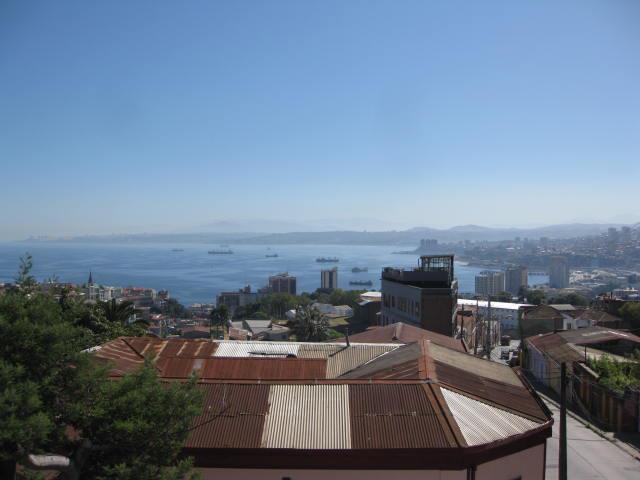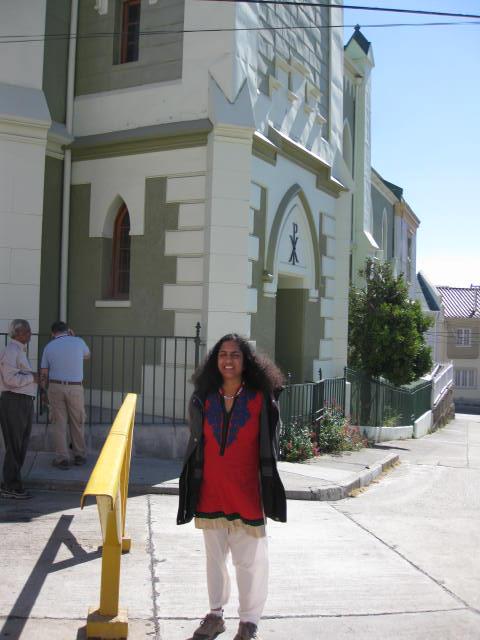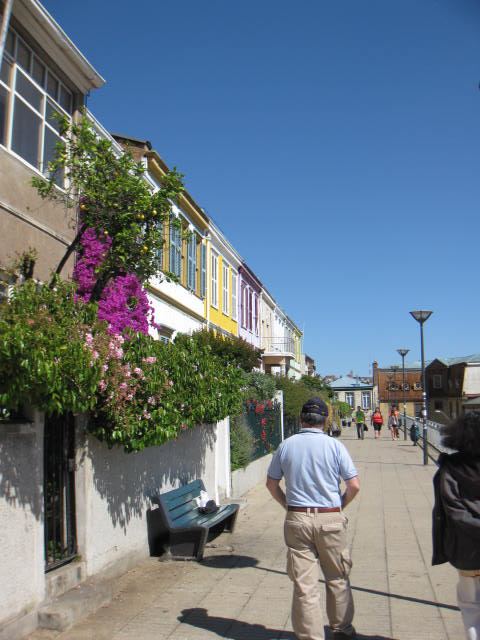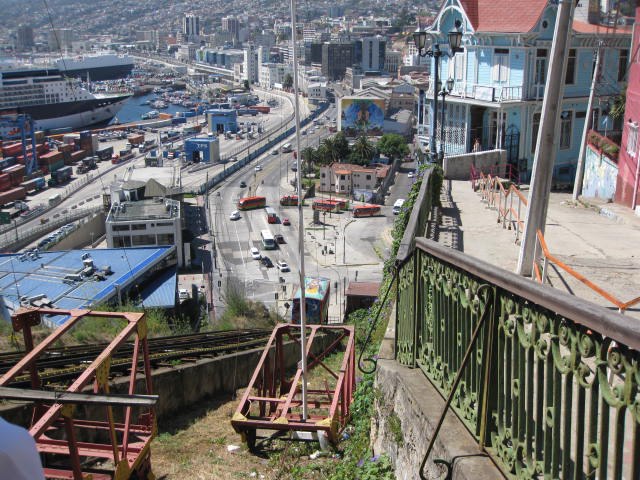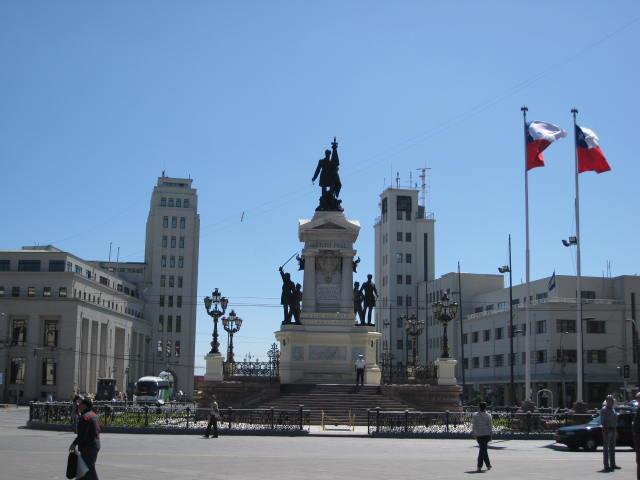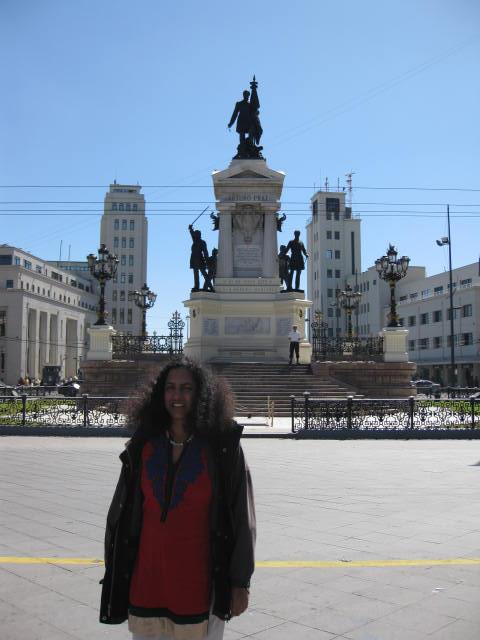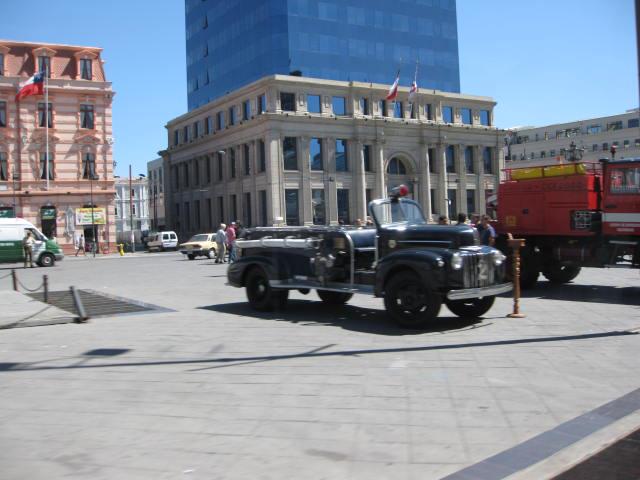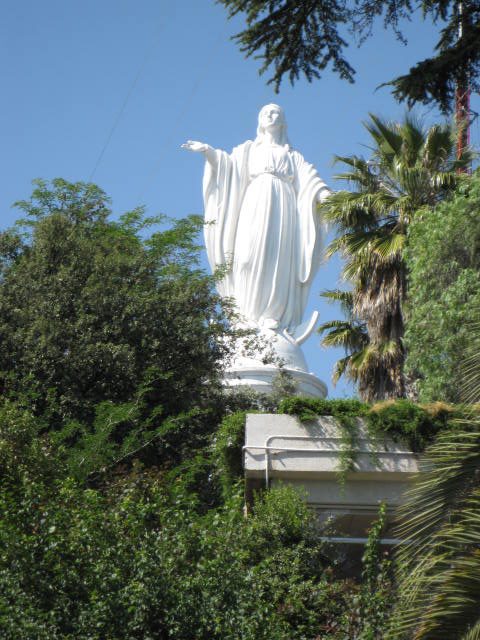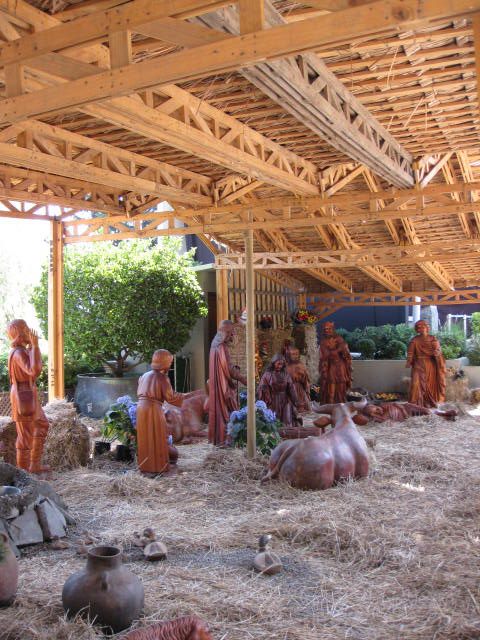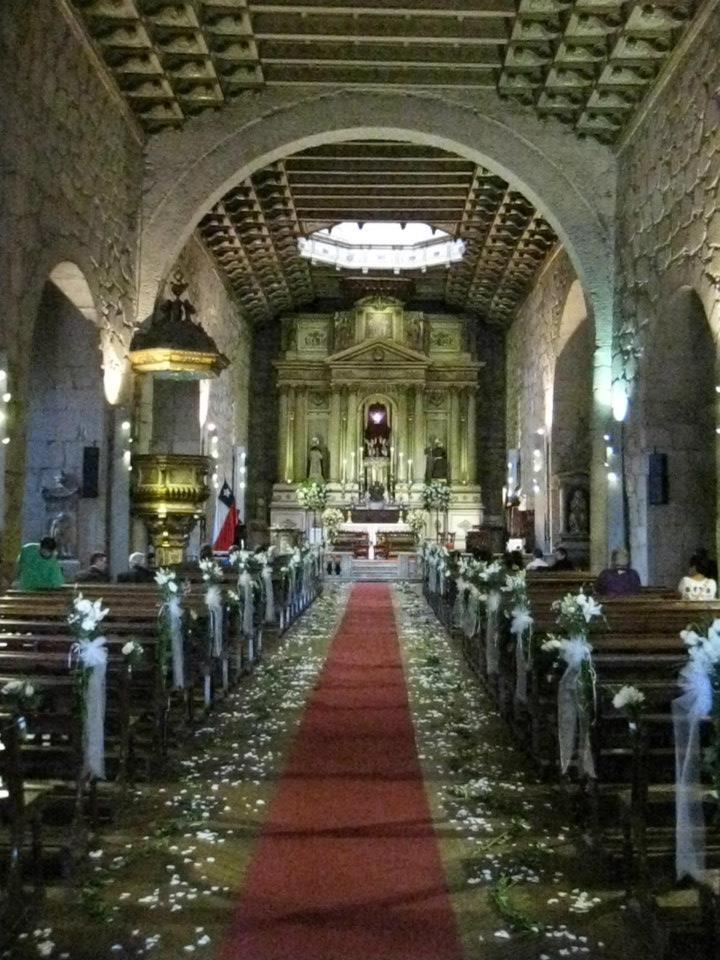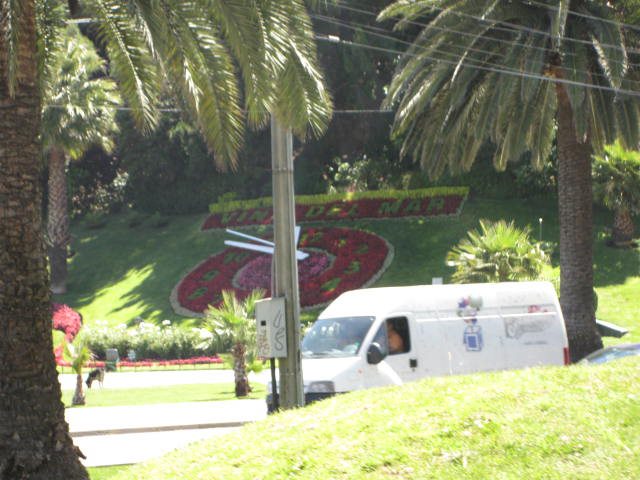
This is the 8th and final part of my series of trip reports about our cruise to South America in December, 2012. Today, our two week cruise would come to an end in Valparaiso, Chile, the country’s main port about 80 miles west of Santiago.
For a general overview of the cruise and a trip report index, click here.
Incidentally, I took this cruise before I decided to start blogging, so I didn’t take enough pictures and notes of our cruise ship to do a separate report on that. That will change for my upcoming series on our road trip/cruise to Boston and Bermuda. If you need a report fix, though, you can read my review on Cruise Critic here. Celebrity gets their grade docked significantly by the customer service (or lack thereof), but the itinerary is great, and the service by the waitstaff, room attendants, etc. was top notch. Now that I’ve had 18 months to cool off, I might try them again.
Date of Visit: Saturday, December 22, 2012
We had been on our cruise ship for a full 15 days by this point, and though we had a great deal of fun in spite of the service hiccups, we were all kind of itching to get off and do something else. It was the first full day of summer in the Southern Hemisphere, and the day in Valparaiso dawned clear and warm, though a bit hazy.
Compared to the somewhat painful process of getting on the ship in Fort Lauderdale, disembarking was a piece of cake. For those unfamiliar with cruising, on most cruise lines, you are given colored tags on the next-to-last day of your cruise indicating your scheduled disembarkation time. You wait until your color is called, then you head off the ship, collect your luggage, and get on your way. Our color was called right on time, and within 30 minutes, we were reunited with all our bags, cleared customs, and headed outside to start our tour-cum-ground transportation to our hotel in Santiago.
We used a company called Port Compass to book our tour. They are a Florida-based company that targets cruise ship passengers, contracting with local tour guides in cruise ship ports-of-call to offer tours at either a) discounted rates and/or b) in smaller groups than what you would get on the ships. I was really impressed with what their services; their prices were reasonable, queries were answered promptly, and most importantly, our friendly guide was waiting for us as we exited customs. We used them again in Alaska last June, and had a similarly positive experience. Give these guys a try if you’re looking for an alternative to a cruise-line sponsored shore excursion.
Although founded in the 16th century, Valparaiso didn’t really take off until Chile’s independence from Spain in 1818, when it became the main harbor for Chile’s navy. It soon became one of South America’s most important ports for ships headed around Cape Horn to Central and North America, and was arguably the most powerful city in Chile, hosting the nation’s first stock exchange, volunteer fire department, public library, and Spanish language newspaper. The city’s importance fell drastically after the opening of the Panama Canal, however, and Valparaiso fell into decay by the second half of the 20th century. The city has made a comeback in the last 15 years or so, however, as a center of education and tourism, thanks to cruise ships docking here to pick up passengers from and drop off passengers heading to Santiago.
Today, the city is perhaps best known for its unique colonial architecture and its steep, winding hillsides overlooking the Pacific – not unlike San Francisco. The oldest section of the city was declared a UNESCO World Heritage Site in 2003. Also, although Santiago is the nation’s capital, Chile’s legislature meets here.
After loading up the van, we took a quick drive around downtown, then headed up to the hills overlooking the city for our first stop, at a scenic overlook, providing a sweeping view of the port below.
We then took a short walking tour through one portion of the World Heritage section on the hillside. Here, you can see the city’s beautiful, colorful Spanish colonial architecture.
Here, we also got to sample another of Valparaiso’s unique offerings – a ride in a funicular (cable car). Due to the steep hills, much of the city couldn’t be served by traditional public transport; hence, beginning in 1883, a series of funicular tracks were built to connect the coastal parts of the city to the hills. About a dozen routes are still in operation today. Below is an example of one such track. If you look closely, you can see the car at the bottom left of the track.
We then moved on to Plaza Sotomayor, one of Valparaiso’s main city squares. The plaza was built in 1906 after a major earthquake leveled much of the city. In fact, it is built on a landfill covering the city’s original port. The plaza contains several important points of interest:
Statue of the Heroes de Iquique (a naval battle during the War of the Pacific)
Antique firetrucks, in honor of the country’s first volunteer fire department
The Armas de Chile building, Chile’s equivalent of the Navy Yard
Use caution when walking around the plaza. Several busy streets intersect here, so be especially mindful of traffic when taking photos.
We then drove over to neighboring city Vina del Mar for lunch at a local joint. We didn’t spend much time here except for lunch, though the city is considered the fashionable quarter of the Valparaiso area, home to white sandy beaches, a casino, high-end shopping malls, and bars and restaurants galore. We did make a brief stop at a history museum and a lapis lazuli shop, and got this photo of an Easter Island (Moai) statue in front of the museum.
We then hit the road for the short (~80 mile) trip to Santiago, passing through more wine country along the way.
Santiago de Chile, the nation’s capital, is a sprawling metropolis of approximately 6.3 million people, or roughly the size of the Dallas/Ft. Worth and Houston metro areas. Founded in 1541, Santiago is Chile’s oldest city, and has been its capital since its founding. The city’s history and culture is too detailed and complex to address in this blog post, but Lonely Planet has a decent Cliff Notes version if you’d like a read. Suffice to say, we didn’t spend nearly enough time in Santiago to do it justice. You really need 2 or 3 days exclusively in the city to truly experience it. My brief impression is that, like other major South American cities like Lima and Buenos Aires, it is an eclectic mix of old and modern, and is definitely worth a long visit.
We only had a couple of hours left on our tour before our scheduled drop-off at our hotel, so we had only two stops in the city on tap: Cerro San Cristobal (San Cristobal Hill) and the Iglesia y Convento de San Francisco (San Franciso Church). First up, on the northwest side of Santiago, was San Cristobal Hill. At an elevation of approximately 2,900 feet, or about 1,000 feet above the city of Santiago, the hill provides sweeping views of the Andes to the east, and the city’s gleaming skyscrapers below. You will, unfortunately, also notice the smog. Much like Southern California, Santiago is located in a “bowl” surrounded by hills and mountains, and as such, is prone to high levels of air pollution.
San Cristobal Hill is also home, naturally, to Santiago’s copy of the Cristo Redentor statue.
Since we were just a few days shy of Christmas, a nativity scene was also on display.
If you’re not visiting as part of a tour group, you can hire a taxi to take you to the top, take the Bellavista Funicular, or hike. If you’re planning hiking, it is a fairly steep hike, and can be strenuous on a hot summer day. It is approximately 45 minutes from the park entrance to the top.
After a short visit, we descended back down the hill and took a short driving tour around the Santiago financial district. Here, we crossed the Rio Mapocho, still running strong thanks to glacial runoff, and caught a good view of the 64-story Gran Torre Santiago, the tallest building in Latin America, and the second tallest building in the Southern Hemisphere. It was still under construction at the time.
We then headed back west and made a quick stop at San Francisco Church. The church was originally built on this site in 1622, but has been damaged multiple times by earthquakes, and the current bell tower dates from the 19th century. A wedding was about to start as we arrived, so we had to make our visit super quick.
It was now nearly 5:00, and we were all feeling really tired after a long day, so we had our tour guide take as to our hotel, the Hilton Garden Inn Santiago Airport. It’s what you’d expect of a Hilton Garden Inn, which is to say, nice enough if unspectacular, but the free breakfast and free internet courtesy of my then-HHonors Gold status was helpful. The hotel also has a decent on-site hotel and a free shuttle to the airport, only a couple of miles away, but on the downside, there is NOTHING in the vicinity of the hotel. It looks like the Santiago suburbs are expanding towards the area, but for now, if you stay at this hotel, you’re pretty much stuck at the hotel. In other words, I wouldn’t recommend it unless you need a place to stay in advance of an early morning/late night flight from SCL. You do get some pretty incredible, if smoggy, views of the Andes if you have a room facing east.
We did spend one more day in the area before flying home, but we decided to take a quick trip to the Andes instead of exploring the city. Click here for my report on that trip.
Miscellaneous Things to Know
NOTE: Much of the information I would normally post here is duplicative to what I’ve already posted in my Arica and La Serena trip reports. I will only post new information here; please click on my previous posts for additional information.
– Climate – Valparaiso and Santiago have distinctly different climates. The central Chile coast is very similar to Northern California, with maximum temperatures ranging from the mid-50s in the winter to the lower-70s in the summer, little diurnal range in temperature, and about 15-20 inches of rain per year. Meanwhile, Santiago, located about 80 miles inland at an elevation of 1,500-2,000 feet, is a little drier, with a wider range of temperatures. Winters are similar to Dallas, with lows in the 30s and highs in the 50s. Summers are similar to Los Angeles, with highs generally in the mid-80s. Rainfall is slightly less at around 11 inches per year. Both cities have a distinct rainy season from May through August.
– Food – at long last, we had the chance to sample local Chilean food in Vina del Mar, before heading east to Santiago. Being a seafaring country, seafood is the obviously specialty of the country, with Chilean sea bass being particularly famous. Much like Argentina and Peru, Chilean cuisine enjoys a variety of influences, from Spanish to Asian, though I noticed a particularly heavy Spanish influence during my limited experience. Beware, portions tend to be EXTREMELY large, which somewhat mitigates the rather high prices here (generally $15-25 per person). My one complaint is that similar to Spanish food, Chilean food is a bit bland for my taste – though take that with a grain of salt, because I tend to go for atomic spicy when it comes to my food. This website provides a good overview of typical Chilean dishes.



